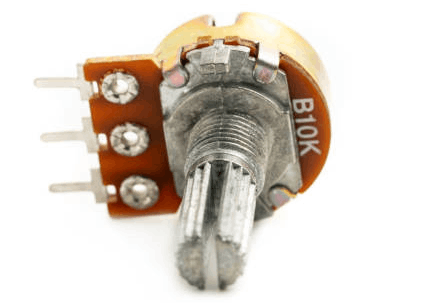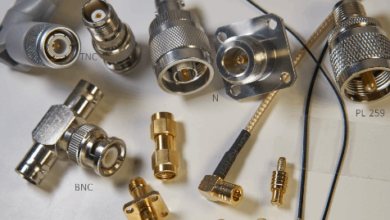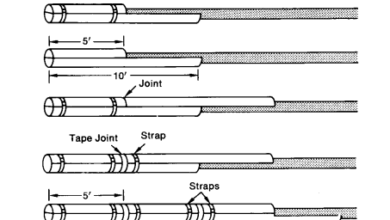Rheostat Switch – How It Works, Applications and Types
In electrical and electronic applications, the use of rheostat switch systems is very common. They are very useful for adjusting the electrical current that goes into a system. Here, we will talk about the rheostat switch applications. You will learn all the aspects of them and how to select one properly.
What is Rheostat Switch?

A rheostat switch is an electrical system in which we can adjust the electrical current that goes to the system. The user can adjust the level of the electrical current with that switch.
The working principle of these switches is very simple. You know that in an electrical circuit, the increasing electrical resistance, the total current decreases in the same voltage. So, if you want to adjust the electrical current or ampere, you need to adjust the resistance of the circuit. And this is the working principle of the rheostat switch applications.
Inside the switch, there is a metallic coil that creates the resistance that we need. And the output of this resistance is connected to this coil. When you turn the switch, the output of the switch travel on the coil. And the resistance in the circuit changes. So we can easily adjust the level of the electrical current like this.
Applications
There is a wide variety of applications that we use these systems. Because in different kinds of electrical systems, we are using them.
- Dimmer systems: For dimmer systems, the use of the rheostat switch applications is very common using a switch you can easily adjust the level of the light. The name comes from this application. You can easily dim the light by increasing the resistance and decreasing the total electrical current on the system.
- Temperature control: Also the use of rheostat switches is very common in temperature control applications. In these switches, there are temperature values, and you can adjust the switch to these temperatures. So the switch mechanically adjusts the level of resistance so that the electrical current will be lower or higher according to the temperature selection that you made. The most common applications are heaters and ovens.
- Motor speed control: In different kinds of applications we are using electrical motors. And adjustment of the speeds of these electric motors is very important. The use of rheostat switches is very common in motor speed control.
- Speakers and audio devices: The use of the rheostat switch applications are also very common. You can adjust the level of sound by turning the switch. So, you are adjusting the level of resistance in these systems.
So, they are very important parts of the different kinds of applications.
Types of Rheostat Switch Applications

There are different types of rheostat switch applications. And they are generally the most common ones.
- Potentiometers: They are the most common ones. The working principle is very simple. You can adjust the control speed, light intensity, and other kinds of systems with them.
- Digital potentiometers: If we compare them with analog ones, they are much more precise. If you need a precise adjustment, you can use these digital potentiometers.
- Heavy-duty potentiometers: If you need to use them in harsh environments where there are debris, washdowns, and oil or coolant spraying, you can use these kinds of applications.
- Panel sealed systems: They are the other systems that you can use for the systems that are exposed to moisture and dust.
- Light dimmers: They are a special type of potentiometer or rheostat switch applications that you can adjust the light. There are multi-way light dimmers available that you can easily adjust the level of the light in the room.
- Foot switches: There is a pedal that you can easily adjust the level of the current with a pedal. They are generally very useful for systems that run on an electric motor.
So, according to the system that you are designing or using, you can easily select one of them.
Types of Actuators
Also, there are different types of actuator mechanisms that you can use for the rheostat switch applications. They are very common in general if you want to adjust them.
- Rotary: They are the most common actuator mechanisms that you can use for different kinds of applications. You can turn the knob and you can easily adjust the level of electric current.
- Lever: They are very similar to the rotary actuators but there is a lever system to turn the knob.
- Toggle: There are generally two levels of electrical current in the toggle applications. You can adjust the toggle up or down.
- Push button: In these systems, you can easily adjust the level of electricity with a push button.
- Pedal: There is a pedal that you can push with your foot or your hand to adjust the level of the resistance of the system.
- Slide dimmers: You can adjust the slider to adjust the level of the electrical current.
In general, these systems are generally sold with the rheostat switch applications.
Other Important Parameters to Consider
While you are selecting or buying a rheostat switch application, you need to consider some parameters in general. These parameters are very important to consider if you want to use them.
- Level of resistance: According to the level of electrical current range that you need to use, the maximum level of resistance of the system is very important. You need to select a proper range for them There are rheostat switch applications that have around 50 ohms to 5 megaohms of resistance according to the system that you will use.
- Several turns: If you are selecting a switch that has a turning knob, you need to define which number of turns you need for the full range. With the increasing number of turns, the accuracy of the system increases.
- Wattage: Also the watt range of the rheostat switch is very important. At which watts that this rheostat works? And also the type of electrical current and the voltage are very important. For example, a rheostat switch can have a working watt of 2000 W @ 250V AC.
- The number of terminals: How many terminals that these systems have? And these terminals will connect the rheostat to the electrical system.
- Standardizations: Also you need to be sure about which standards these rheostat switch applications are met. The general standards are UL, CE, CSA, or CID.
- Maximum voltage: Also you need to know the level of the voltage that the rheostat switches that can work. You need to select according to the grid voltage level of the country.
Last Words
So as you understand that the rheostat switch applications are a very important part of electrical control systems. There are different kinds of applications that we are using them. Also, there are different types are available according to the use.
While you are selecting one of them, you need to consider the various kinds of parameters that we stated above.
If you have any comments or questions about the rheostat switch applications, please leave them below.
Related topics about electricity;
Tru Connector – Company Working Areas and Products
Ceramic Tube – Applications and Types
Duct Plug – Application and Types
15 HP Electric Motor Selection Guide



